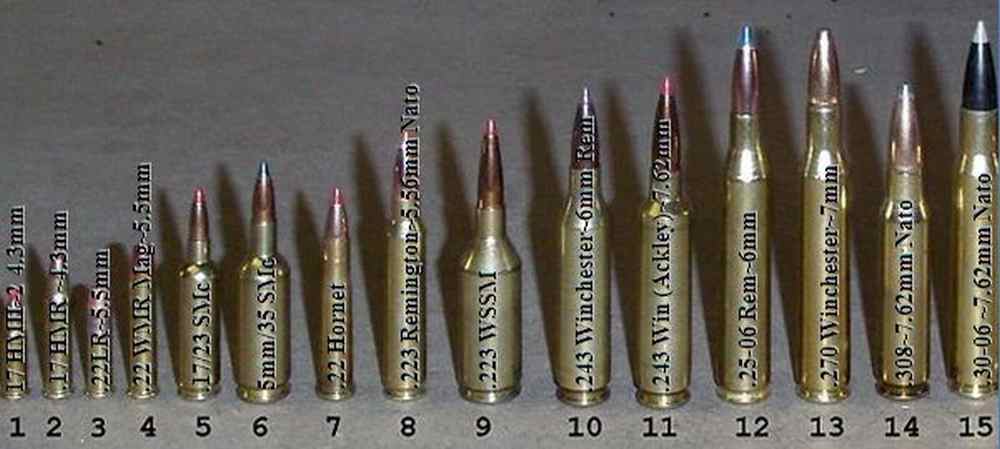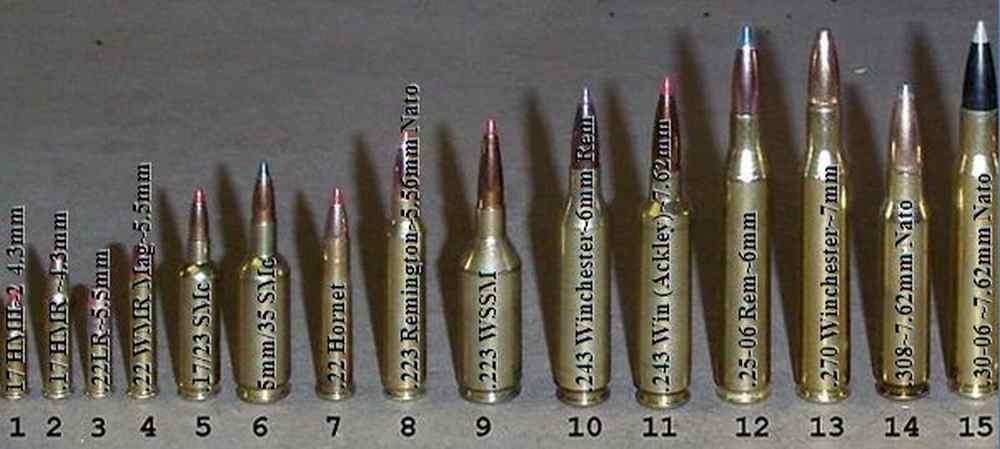“From muskets to modern marvels, tracing the history of rifle ammunition.”
History of Rifle Ammunition
Rifle ammunition has come a long way since its inception, evolving over centuries to become the powerful and efficient cartridges we know today. The history of rifle ammunition is a fascinating journey that showcases the ingenuity and innovation of firearms enthusiasts and manufacturers throughout the ages.
The earliest forms of rifle ammunition date back to the 15th century, when soldiers used matchlock firearms that required loose powder and a projectile to be loaded separately. These early rifles were slow to reload and often unreliable, but they laid the foundation for the development of more advanced ammunition in the centuries to come.
One of the most significant advancements in rifle ammunition came in the 19th century with the invention of the metallic cartridge. This revolutionary design combined the powder, projectile, and primer into a single unit, making rifles faster and easier to reload. The metallic cartridge also improved accuracy and reliability, making rifles more effective in combat and hunting situations.
As technology continued to advance, so too did rifle ammunition. The introduction of smokeless powder in the late 19th century further improved the performance of rifles, increasing muzzle velocity and reducing fouling in the barrel. This allowed for greater accuracy and range, making rifles even more lethal on the battlefield.
The early 20th century saw the development of new bullet designs, such as the spitzer bullet, which featured a pointed tip for improved aerodynamics and penetration. These advancements in bullet design further increased the effectiveness of rifle ammunition, making it even more deadly in the hands of skilled marksmen.
During World War I and World War II, rifle ammunition played a crucial role in shaping the outcome of battles. The introduction of semi-automatic and fully automatic rifles further increased the rate of fire and lethality of infantry weapons, making them a formidable force on the battlefield.
In the post-war era, rifle ammunition continued to evolve with the development of new calibers and bullet designs. The introduction of polymer-tipped bullets and hollow-point bullets improved terminal ballistics, making rifles more effective for hunting and self-defense purposes.
Today, rifle ammunition continues to push the boundaries of performance and innovation. Advances in materials science and manufacturing technology have led to the development of high-performance cartridges that offer superior accuracy, range, and terminal ballistics.

From the humble beginnings of loose powder and lead balls to the sophisticated cartridges of today, the evolution of rifle ammunition is a testament to human ingenuity and determination. As firearms enthusiasts and manufacturers continue to push the boundaries of what is possible, it is exciting to think about what the future holds for rifle ammunition.
In conclusion, the history of rifle ammunition is a rich tapestry of innovation and progress. From the earliest matchlock rifles to the high-performance cartridges of today, the evolution of rifle ammunition has been a remarkable journey. As technology continues to advance, it is certain that rifle ammunition will continue to evolve, providing shooters with even more powerful and efficient cartridges for years to come.
Evolution of Rifle Ammunition Technology
Rifle ammunition has come a long way since its inception, evolving over the years to become more efficient, powerful, and accurate. The journey of rifle ammunition technology is a fascinating one, filled with innovation and advancements that have revolutionized the way we hunt, shoot, and defend ourselves.
In the early days of rifle ammunition, black powder was the propellant of choice. This primitive form of gunpowder was messy, inconsistent, and produced a lot of smoke when fired. However, it was the best option available at the time, and it allowed early rifles to be effective at relatively short distances.
As technology advanced, so did rifle ammunition. Smokeless powder was introduced in the late 19th century, providing a cleaner, more consistent burn that increased the velocity and range of bullets. This innovation marked a significant leap forward in the evolution of rifle ammunition, making firearms more powerful and accurate than ever before.
Another major development in rifle ammunition technology was the introduction of jacketed bullets. These bullets are encased in a harder metal jacket, typically copper or brass, which helps to improve accuracy and penetration. Jacketed bullets also reduce fouling in the barrel, allowing for more shots to be fired before cleaning is necessary.
The next big leap in rifle ammunition technology came with the development of spitzer bullets. These bullets have a pointed tip, which reduces drag and improves ballistic coefficient, resulting in greater accuracy and range. Spitzer bullets are commonly used in military and hunting applications, where long-range shooting is required.
In recent years, advancements in bullet design have focused on increasing terminal performance. Hollow point bullets, for example, are designed to expand upon impact, creating a larger wound cavity and increasing stopping power. These bullets are popular for self-defense and hunting, where quick, humane kills are essential.
Another innovation in rifle ammunition technology is the use of polymer-tipped bullets. These bullets have a plastic tip that helps to improve aerodynamics and ballistic coefficient, resulting in greater accuracy and range. The tip also initiates expansion upon impact, making polymer-tipped bullets effective for hunting a wide range of game.
One of the most recent advancements in rifle ammunition technology is the development of lead-free bullets. These bullets are designed to reduce environmental impact by eliminating lead from the projectile. While lead has long been the standard material for bullets, its toxicity has led to concerns about its effects on wildlife and the environment. Lead-free bullets offer a safer alternative without sacrificing performance.
Overall, the evolution of rifle ammunition technology has been a remarkable journey, marked by innovation, ingenuity, and a relentless pursuit of perfection. From the days of black powder to the modern era of polymer-tipped, lead-free bullets, rifle ammunition has come a long way, providing shooters with more power, accuracy, and versatility than ever before. As technology continues to advance, we can only imagine what the future holds for rifle ammunition and the impact it will have on the world of firearms.
Impact of Rifle Ammunition on Warfare
Rifle ammunition has played a crucial role in shaping the course of warfare throughout history. From the early days of muskets and flintlock rifles to the modern high-powered cartridges used by military snipers, the evolution of rifle ammunition has been a fascinating journey of innovation and technological advancement.
In the early days of warfare, soldiers relied on muskets and flintlock rifles to engage their enemies from a distance. These weapons were slow to load and had limited range and accuracy, making them less effective in combat. However, as technology advanced, so did the design of rifle ammunition.
The invention of the Minié ball in the mid-19th century revolutionized rifle ammunition. This conical-shaped bullet was more accurate and had a longer range than previous ammunition, making it a game-changer on the battlefield. The Minié ball was also easier to load and could be fired more quickly, giving soldiers a significant advantage in combat.
As warfare continued to evolve, so did rifle ammunition. The development of smokeless powder in the late 19th century allowed for higher velocities and greater muzzle energy, resulting in more powerful and accurate ammunition. This advancement paved the way for the creation of high-powered cartridges that are still used in modern rifles today.
One of the most significant advancements in rifle ammunition came with the introduction of the .30-06 cartridge in the early 20th century. This cartridge, developed by the United States military, was a game-changer in terms of power and accuracy. It quickly became the standard ammunition for military rifles and was used in both World Wars.
The impact of rifle ammunition on warfare cannot be overstated. The ability to engage enemies from a distance with accuracy and power has changed the way battles are fought. Snipers, in particular, rely on high-powered rifle ammunition to take out targets from long distances, making them a formidable force on the battlefield.
In recent years, advancements in rifle ammunition technology have continued to push the boundaries of what is possible. The development of armor-piercing and hollow-point ammunition has given soldiers even more options when it comes to engaging enemies in combat. These specialized rounds are designed to penetrate armor or cause maximum damage upon impact, making them invaluable in certain situations.
The evolution of rifle ammunition is a testament to human ingenuity and the constant drive to improve upon existing technology. From the early days of muskets to the high-powered cartridges used by modern military snipers, rifle ammunition has come a long way. Its impact on warfare cannot be understated, as it has changed the way battles are fought and won.
As technology continues to advance, it is likely that rifle ammunition will continue to evolve and improve. Who knows what the future holds for this essential component of modern warfare? One thing is for certain – the journey of rifle ammunition is far from over, and its impact on warfare will continue to be felt for years to come.
Notable Rifles and Ammunition Throughout History
Rifle ammunition has come a long way since its inception, evolving and improving over the years to meet the demands of shooters and hunters alike. From the early days of black powder cartridges to the modern high-velocity rounds used in today’s firearms, the journey of rifle ammunition is a fascinating one that showcases the ingenuity and innovation of firearms manufacturers.
In the early 19th century, rifle ammunition was primarily made up of black powder cartridges. These cartridges were loaded with a combination of gunpowder, a bullet, and a primer, all contained within a brass or paper casing. While effective for their time, black powder cartridges were limited in range and stopping power, making them less than ideal for long-range shooting or hunting large game.
As technology advanced, so too did rifle ammunition. The invention of smokeless powder in the late 19th century revolutionized the firearms industry, allowing for higher velocities and greater accuracy than ever before. Smokeless powder cartridges quickly replaced black powder cartridges as the standard ammunition for rifles, paving the way for the development of more powerful and efficient firearms.
One of the most notable advancements in rifle ammunition came with the introduction of the .30-06 cartridge in the early 20th century. Developed by the United States military, the .30-06 cartridge was a high-powered round that quickly became popular among civilian shooters and hunters. Its combination of power, accuracy, and versatility made it a favorite among sportsmen and marksmen alike, solidifying its place as one of the most iconic cartridges in firearms history.
In the years that followed, rifle ammunition continued to evolve, with manufacturers experimenting with different bullet designs, casing materials, and propellants to improve performance and efficiency. The development of new calibers and cartridges allowed shooters to tailor their ammunition to specific tasks, whether it be long-range shooting, hunting, or target practice.
Today, rifle ammunition has reached new heights of performance and precision, thanks to advancements in bullet technology, propellant chemistry, and manufacturing processes. High-velocity rounds like the .223 Remington and .308 Winchester have become popular choices for shooters looking for accuracy and stopping power, while specialized rounds like the .338 Lapua Magnum and .50 BMG are used for long-range shooting and big game hunting.
The future of rifle ammunition looks bright, with manufacturers continuing to push the boundaries of what is possible in terms of performance and innovation. From polymer-tipped bullets to advanced propellants, the possibilities for improving rifle ammunition are endless, ensuring that shooters and hunters will have access to the best possible ammunition for their needs.
In conclusion, the evolution of rifle ammunition is a testament to the creativity and dedication of firearms manufacturers throughout history. From the humble beginnings of black powder cartridges to the high-tech rounds of today, rifle ammunition has come a long way, providing shooters with the tools they need to succeed in the field and on the range. As technology continues to advance, the future of rifle ammunition looks brighter than ever, promising even greater performance and precision for shooters of all skill levels.
Future Trends in Rifle Ammunition Development
Rifle ammunition has come a long way since its inception, evolving and improving over the years to meet the demands of shooters and hunters alike. From the early days of black powder cartridges to the modern era of high-velocity, precision-engineered rounds, the journey of rifle ammunition has been a fascinating one.
In the early days of rifle ammunition, black powder was the propellant of choice. These cartridges were relatively low-powered and had limited range and accuracy. However, they were a significant improvement over the muzzle-loading rifles of the past, allowing shooters to fire multiple rounds quickly and efficiently.
As technology advanced, so did rifle ammunition. Smokeless powder was introduced in the late 19th century, revolutionizing the industry. This new propellant was more powerful and cleaner burning than black powder, allowing for higher velocities and greater accuracy. The introduction of smokeless powder marked a turning point in the evolution of rifle ammunition, paving the way for the development of more powerful and efficient cartridges.
One of the most significant advancements in rifle ammunition came with the introduction of the .30-06 Springfield cartridge in the early 20th century. This cartridge, developed for the M1903 Springfield rifle, was a high-velocity round that quickly became popular among military and civilian shooters alike. The .30-06 Springfield was a versatile cartridge, capable of taking down a wide range of game and performing well at long distances.
In the years that followed, rifle ammunition continued to evolve, with manufacturers experimenting with different bullet designs, propellants, and casings to improve performance. The development of new materials and manufacturing techniques also played a role in the evolution of rifle ammunition, allowing for greater consistency and precision in production.
Today, rifle ammunition has reached new heights of performance and efficiency. Modern cartridges are engineered to deliver maximum velocity, energy, and accuracy, making them ideal for a wide range of shooting applications. From hunting to long-range shooting competitions, today’s rifle ammunition is designed to meet the needs of shooters of all skill levels.
One of the most exciting trends in rifle ammunition development is the use of advanced materials and technologies to improve performance. For example, some manufacturers are now using polymer-coated bullets to reduce friction and improve accuracy. Others are experimenting with new propellants and casing materials to increase velocity and energy transfer.
Another trend in rifle ammunition development is the use of computer-aided design and manufacturing techniques to create more precise and consistent cartridges. By using advanced software and machinery, manufacturers can produce ammunition with tighter tolerances and better quality control, resulting in more consistent performance on the range or in the field.
Looking to the future, the evolution of rifle ammunition shows no signs of slowing down. As technology continues to advance, we can expect to see even more innovations in bullet design, propellants, and casings that will further improve performance and efficiency. Whether you’re a hunter, competitive shooter, or just enjoy plinking at the range, the future of rifle ammunition looks bright. So load up your favorite rifle, take aim, and enjoy the evolutionary journey of rifle ammunition.






